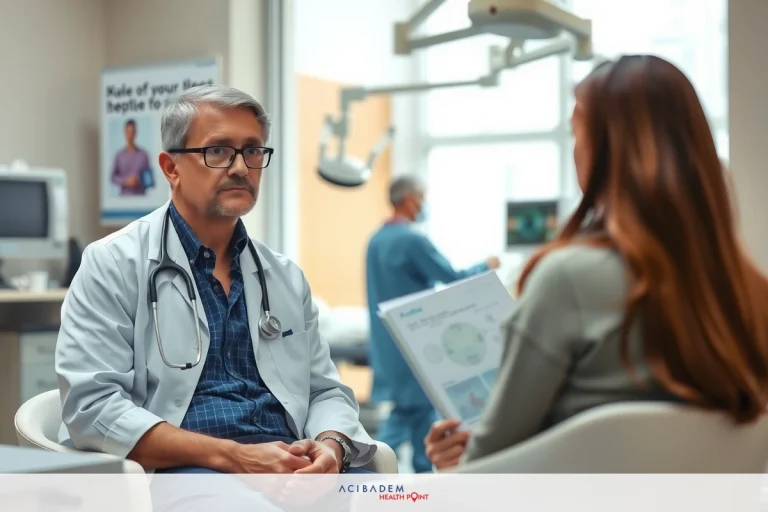How Common are Rhinoplasty Complications?
How Common are Rhinoplasty Complications? Rhinoplasty, the artful reshaping of the nose, carries with it a certain level of risk as do all surgical interventions. Complications can occur and when they do, their impact ranges from mild discomfort to serious medical issues. The frequency of these complications is a topic that often raises questions.
The factors influencing the rate at which these complications occur vary greatly. Patient health, surgeon experience and technique employed during surgery play vital roles in determining this rate. Furthermore, adhering strictly to post-operative instructions goes a long way in reducing potential risks associated with rhinoplasty.
It’s also important to have realistic expectations about what rhinoplasty can achieve for you personally while understanding potential complications inherent to this type of surgery. In essence, gaining knowledge about common rhinoplasty complications helps individuals make informed decisions regarding their healthcare.
Understanding Rhinoplasty Complications
Rhinoplasty, also known as nose surgery, is a common surgical procedure with its unique set of potential complications. These complications can differ greatly from patient to patient and are dependent on various factors such as the complexity of the surgery, surgeon’s skill level and individual healing process. The frequency of these rhinoplasty complications is an area that needs detailed exploration.
The most common risks associated with rhinoplasty include infection, adverse reaction to anesthesia, persistent swelling or bruising and breathing difficulties. Infrequent but serious complications may encompass significant bleeding during or after surgery and skin problems caused by bandaging or tape placement. Despite being rare in occurrence, these pose substantial challenges if they do manifest.
It is important to note that incidence does not equate inevitability when it comes to post-operative problems following rhinoplasty. A large number of patients experience no severe issues post-surgery while others may encounter minor ones which resolve over time without lasting effects. However, understanding these potential issues allows for better preparedness and aids informed decision-making regarding this procedure.
Factors Influencing Complication Rates
It is crucial to appreciate that the rate of complications in rhinoplasty isn’t a constant value. It can be influenced by several factors, all playing their respective roles in shaping patient outcomes post-surgery.
One major factor is the overall health of the patient. Those who are generally healthier or without any pre-existing conditions tend to have lower risk rates. However, individuals with certain medical issues such as cardiovascular diseases, respiratory problems or diabetes may face increased risks due to these underlying conditions.
The experience and skill level of the surgeon performing rhinoplasty also significantly influence complication rates. Surgeons armed with substantial experience and exceptional skills typically exhibit lower complication rates compared to those less experienced ones. This scenario underlines how critical it is for patients seeking this surgery to choose their surgeon carefully.
Surgical technique utilized during operation constitutes another important aspect when evaluating potential

complications from rhinoplasty. Some methods might carry higher risk profiles compared to others depending on their complexity levels and invasiveness degrees.
Additionally, thorough pre-operative assessment plays a vital role in managing potential risks associated with rhinoplasty. Proper evaluation helps identify any existing conditions that could escalate surgical risks while determining if a patient is an ideal candidate for this procedure based on specific criteria such as age, general health status and realistic expectation about results.
Lastly, lifestyle choices like smoking habits can also impact complication rates greatly since nicotine reduces blood flow slowing down wound healing process which increases risk of infection among other things.
Understanding these influencing factors allows both surgeons and patients alike make informed decisions regarding the procedure mitigate potential complications they may encounter along way towards achieving desired outcome from surgery.
Reducing the Risk of Complications
The risk of complications after rhinoplasty, like any surgical procedure, can never be completely eliminated. However, there exist certain strategies that can significantly minimize these risks and increase the likelihood of a successful outcome.
One such strategy is choosing a skilled surgeon with extensive experience in performing rhinoplasties. Surgeons who have performed countless procedures tend to develop an innate understanding of the complexities involved and are well-equipped to handle unexpected situations during surgery. In addition, they are more adept at tailoring surgical techniques to suit individual patient needs thereby reducing potential for complications.
Following post-operative instructions meticulously is another crucial factor in minimizing risks associated with rhinoplasty. These guidelines typically include advice on wound care, medications to take or avoid, activities that should be restricted and signs of possible complications to watch out for. Adherence to these recommendations ensures smooth recovery process while mitigating chances for undesirable outcomes.
Proper aftercare also plays a significant role in determining the success rate following rhinoplasty. This involves keeping follow-up appointments with your doctor so they can monitor healing progress closely and address any arising issues promptly before they escalate into major problems.
Realistic expectations too hold immense importance when it comes to reducing risk factors associated with nose surgery. Patients should not only understand what procedure can achieve them but also its limitations inherent part this type surgery having clear realistic expectation about results lead higher satisfaction rates lower incident regret post-surgery which indirectly contributes reduced stress levels hence faster healing times ultimately fewer complication incidences overall.
In essence making informed decisions based these aspects not only ensures better preparedness towards handling potential problems but also fosters healthier conversation between doctors patients leading greater transparency trust relationship consequently successful outcomes from surgeries like Rhinoplasty.
Frequently Asked Questions
Q: What are some common complications of rhinoplasty?
A: Some of the most recognized complications include infection, adverse reaction to anesthesia, persistent swelling or bruising and breathing difficulties. Occasionally, more serious issues such as significant bleeding during or after surgery can occur.
Q: How often do these complications arise?
A: The frequency varies greatly depending on numerous factors such as patient health status, surgeon’s skill level and the technique used in the procedure among others. It is important to note that many patients experience no severe issues post-surgery.
Q: Are there measures I can take to reduce my risk of experiencing these complications? A: Yes, several strategies help mitigate these risks including selecting a skilled surgeon with extensive experience in performing rhinoplasties; adhering strictly to post-operative instructions provided by your healthcare provider; maintaining proper aftercare protocol and setting realistic expectations about what the procedure can achieve for you personally.
Q: If I adhere strictly to all safety precautions, will I be completely free from any potential risks associated with this surgery? A: While adherence to safety precautions significantly reduces risk levels, it does not eliminate them entirely. There are inherent risks involved in every surgical procedure but having an open conversation with your doctor regarding potential problems allows you better preparedness towards handling them if they were ever present themselves.








